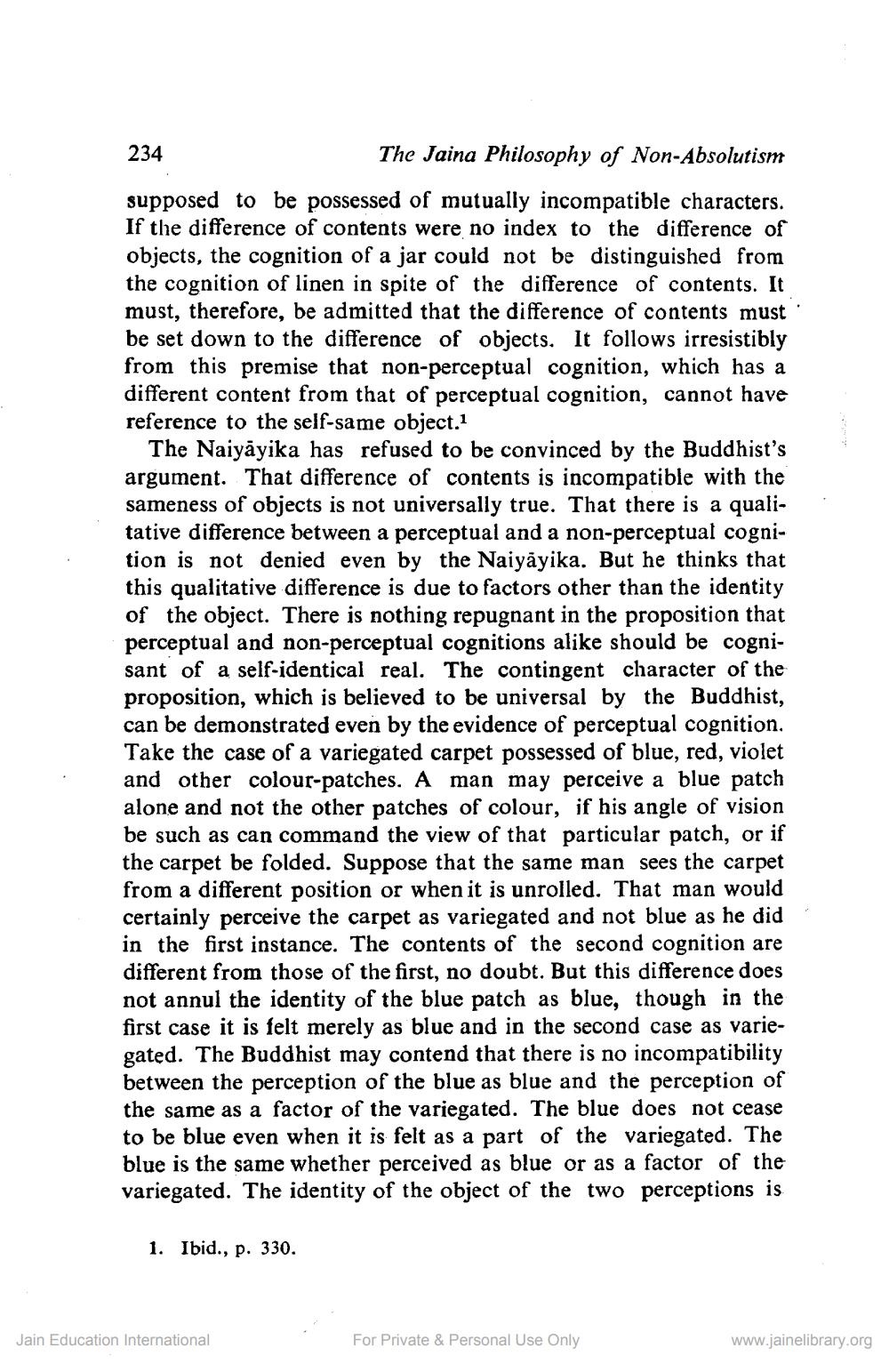________________
234
The Jaina Philosophy of Non-Absolutism
supposed to be possessed of mutually incompatible characters. If the difference of contents were no index to the difference of objects, the cognition of a jar could not be distinguished from the cognition of linen in spite of the difference of contents. It must, therefore, be admitted that the difference of contents must be set down to the difference of objects. It follows irresistibly from this premise that non-perceptual cognition, which has a different content from that of perceptual cognition, cannot have reference to the self-same object.1
The Naiyayika has refused to be convinced by the Buddhist's argument. That difference of contents is incompatible with the sameness of objects is not universally true. That there is a qualitative difference between a perceptual and a non-perceptual cognition is not denied even by the Naiyayika. But he thinks that this qualitative difference is due to factors other than the identity of the object. There is nothing repugnant in the proposition that perceptual and non-perceptual cognitions alike should be cognisant of a self-identical real. The contingent character of the proposition, which is believed to be universal by the Buddhist, can be demonstrated even by the evidence of perceptual cognition. Take the case of a variegated carpet possessed of blue, red, violet and other colour-patches. A man may perceive a blue patch alone and not the other patches of colour, if his angle of vision be such as can command the view of that particular patch, or if the carpet be folded. Suppose that the same man sees the carpet from a different position or when it is unrolled. That man would certainly perceive the carpet as variegated and not blue as he did in the first instance. The contents of the second cognition are different from those of the first, no doubt. But this difference does not annul the identity of the blue patch as blue, though in the first case it is felt merely as blue and in the second case as variegated. The Buddhist may contend that there is no incompatibility between the perception of the blue as blue and the perception of the same as a factor of the variegated. The blue does not cease to be blue even when it is felt as a part of the variegated. The blue is the same whether perceived as blue or as a factor of the variegated. The identity of the object of the two perceptions is
1. Ibid., p. 330.
Jain Education International
For Private & Personal Use Only
www.jainelibrary.org




